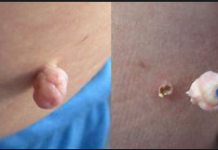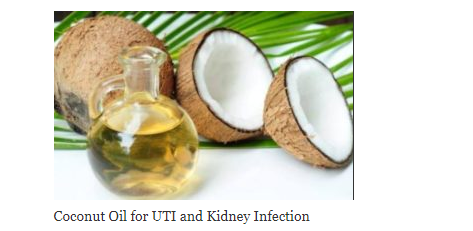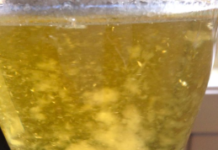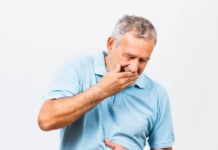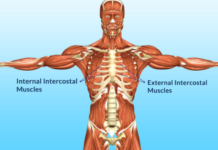Do you have yeast allergy? What are the symptoms? What are the nutritional yeast foods to include or avoid in your diet? In this post, we shall focus on yeast allergy, its causes and how to manage and treat. We shall also discuss briefly on bakers and brewer’s yeast allergy.
Yeast can be described as a small fungus made up of singular oval cells that can convert sugar into alcohol and carbon dioxide. The process is through fermentation. Bakers and brewers use this process to raise bread dough and ferment beer.

What is yeast allergy?
This is a common type of yeast commonly caused by fungus called candida albicans. You will find the yeast on the surface of human body including your skin and the tract of gastrointestinal.
The yeast or fungus causes no harm when in small numbers. However, if the yeast cells are so large in number such that there’s no imbalance, it can lead to yeast allergy or sensitivity. Yeast may exist in different forms and food products like bread, milk, beer and nutritional supplements. Yeast is used in preparation and fermentations of foods. We shall discuss that later in the post.
Yeast intolerance
As pointed earlier, yeast comes in the form of fungus organism that thrives on sugar. Overproduction of yeast can be harmful to your body. Candida is the most common form of yeast found on the surface of the skin and digestive tract.
If you have intolerance, it means your body produces an inflammatory response to yeast proteins present in foods and drinks that you consume. This also means you may experience reactions to truffles, blue cheeses, malt and mushrooms which all contain fungus.
Having the knowledge of the type of foods to avoid can help to manage yeast allergy. We shall discuss the type of foods to avoid later in the post.
Yeast allergy symptoms
What are the symptoms of yeast allergy? It is estimated that 1 out of 3 Americans suffer from a yeast allergy. A yeast allergy will present its signs as a yeast infection. The symptoms may vary from person to person.

They symptoms include:
- Feeling dizziness
- Problem with breathing
- Abdominal swelling
- Joint pain
- Diarrhea
- Depression
- Heartburn or acidity
- Fatigue
- Hay fever
- Sneezing
- Watery and itchy eyes
- Bloating of the stomach
- Bad breath
- Flatulence or production of gas after eating sugary food
- Coating of the tongue
To understand whether you’re suffering from yeast allergy, it is important to have yourself. Medical tests like organic acid tests can help determine if you’re suffering from yeast allergy.
There’s a controversy that a yeast allergy would cause red, blotchy skin that some people develop after taking in alcoholic beverages. A yeast allergy will not cause a rash either.
What are the causes of yeast allergy?
The causes of yeast allergy include:
1. Allergic reaction
Yeast allergy in small quantities in your body doesn’t cause any harm. But overproduction of certain type of yeast such as Candida albicans can trigger allergic reaction. An overgrowth can also occur if antibiotics destroy the bacteria responsible for keeping fungal growth under control.
2. Yeast intolerance
If you experience any problem whenever you consume foods or beverages containing yeast, then you may be intolerant towards yeast. If you consume yeast, you end up developing an inflammatory response towards it thus the allergy.
3. Immune system
If your immune system is sensitive to the type of yeast found in baker’s and brewer’s, then you will develop an allergic reaction towards to the yeast. Your immune system will produce histamines to fight them. This will trigger an allergic reaction.
Baker’s yeast allergy
This is one of the nutritional yeast. An allergy to baker’s yeast is usually rare. It may go unnoticed and therefore it may go undiagnosed for years or sometimes misdiagnosed as an allergy to gluten or intolerance.
Baker’s yeast allergies are often triggered to by brewer’s yeast and environmental fungi and molds. Consult your doctor on the methods of allergy testing.
Brewer’s yeast allergy
Brewer’s yeast is one the ingredient used in production of beer and bread. This type of yeast has Saccharomyces cerevisiae, the one –celled fungus. As a result it has a bitter taste. It is highly rich in chromium, which can help the body maintain normal blood sugar levels.
It can be used as a nutritional supplement. Since is it considered a probiotic, it can aid in digestion. What does brewer’s yeast do? It can help in proper functioning of the digestive tract and strengthen your immune system. The probiotic natures of brewer’s yeast make it effective in preventing diarrhea and treat other digestive disorders.
Side effects of Brewer’s yeast
Generally, the side effects of brewer’s yeast are mild. But you should consult with your healthcare provider before taking brewer’s yeast. The side effects include:
- Excess gas
- Bloating
- Migraine – like headaches.
Other side effects include: chest pain, throat and chest tightness or difficulty in breathing. These complications are an indication of brewer’s yeast allergy.
Yeast allergy diet
Is there a diet for yeast allergy? If you’re suffering from yeast allergy, there are certain kinds of foods to be avoided. You should which kind of food to watch out for. Treating your candida means doing some changes to your diet and lifestyle. The foods to avoid have been listed in the article.

Generally foods to avoid on yeast allergy diet:
- High sugar fruits
- Glutinous grains
- Meats like pork and lunch meat
- Alcoholic drinks
- Caffeinated or sugary drinks
- Moldy nuts and seeds
- Fish like tuna and swordfish
Yeast –free candida is the effective way to reduce and eliminate candida symptoms. Change your diet to discourage the overgrowth of yeast.
Nutritional yeast allergy
Nutritional yeast is also known as savory yeast. This is inactive yeast usually made from sugarcane molasses. Yeast is nutritional in nature. Although it causes allergic reaction to some people, others find no problem at all. The overgrowth of yeast or candida in your body is the cause of allergic reaction.
Nutritional yeast can be considered as the good yeast to include in your diet. This type of yeast is grown from fungi, like benefit packed mushrooms and cordyceps.
A perfect amount added to any of your meal, is a complete source of protein and vitamins. It has great source of vitamin B6 and vitamin B12. If you’re a vegetarian, nutritional yeast can help provide much needed vitamins.
Information concerning on the risk of nutritional yeast is not yet known. But only for someone who is allergic to yeast.
Yeast allergy symptoms on skin
As mentioned earlier in the post, yeast allergy can vary from person to person. Some of the symptoms include; abdominal swelling, difficulties in breathing, dizziness and joint pain. On skin, it is so hard to tell whether the symptoms are of yeast allergy.
There’s a misconception that yeast allergy appear as red, blotchy skin that some people suffer after drinking alcoholic beverages. Rarely does a yeast allergy cause a rash on the skin. Consult your doctor for tests to determine the type of allergy you’re suffering from.
Yeast allergy – foods to avoid
If you’re prone to allergy as soon as you consume food and drinks that contain yeast, then you should consider avoiding such foods. This is one of the treatment options to prevent allergic reaction. The common foods sources that cause yeast allergy include:
- Bread
- Baked food such as cinnamon rolls, biscuits, muffins
- Buttermilk
- Synthetic cream
- Yoghurt
- Soy sauce
- Cereal products
- Alcohol such as beer, wine and ciders
- Age meats and olives
- Mushrooms
- Vinegar and foods that contain vinegar such as pickles or salad
- Citric acid
- Tofu
- Blueberries, strawberries
- Fermented foods
- Items that have that have been opened and stored for a long period.
Yeast Allergy Treatment
The following are ways in which you can treat yeast allergy. They include:
1. Medication
Some of the medication to use to manage and treat yeast allergy include: antihistamines such as loratadine and diphenhydramine. Consult your doctor to know which medications is safe for you to consume
2. Avoidance
If you develop yeast allergy on consuming foods and drinks that contain yeast, then you should avoid them. Consult your dietician for guidance to make changes in the diet.
3. Probiotic supplements
This kind of yeast allergy usually occurs to people with a weak immune system. Visit your healthcare provider to discuss on how you can strengthen your immune system.
Sources and references:
- https://www.healthline.com/health/allergies/yeast
- http://www.yorktest.com/food-intolerance-advice/problem-foods/yeast-intolerance/
- https://foodallergy.com/allergy-immunology/yeast-and-mold-allergies/
- https://www.livestrong.com/article/54621-foods-avoid-yeast-intolerance/
- http://www.healthguidance.org/entry/11465/1/Do-You-Have-Yeast-Intolerance.html
- http://www.allergy-details.com/yeast-allergy/foods-contain-yeast/
- https://www.thecandidadiet.com/foodstoavoid.htm
- http://jandonline.org/article/S2212-2672(13)00070-1/abstract
- https://draxe.com/candida-diet/

